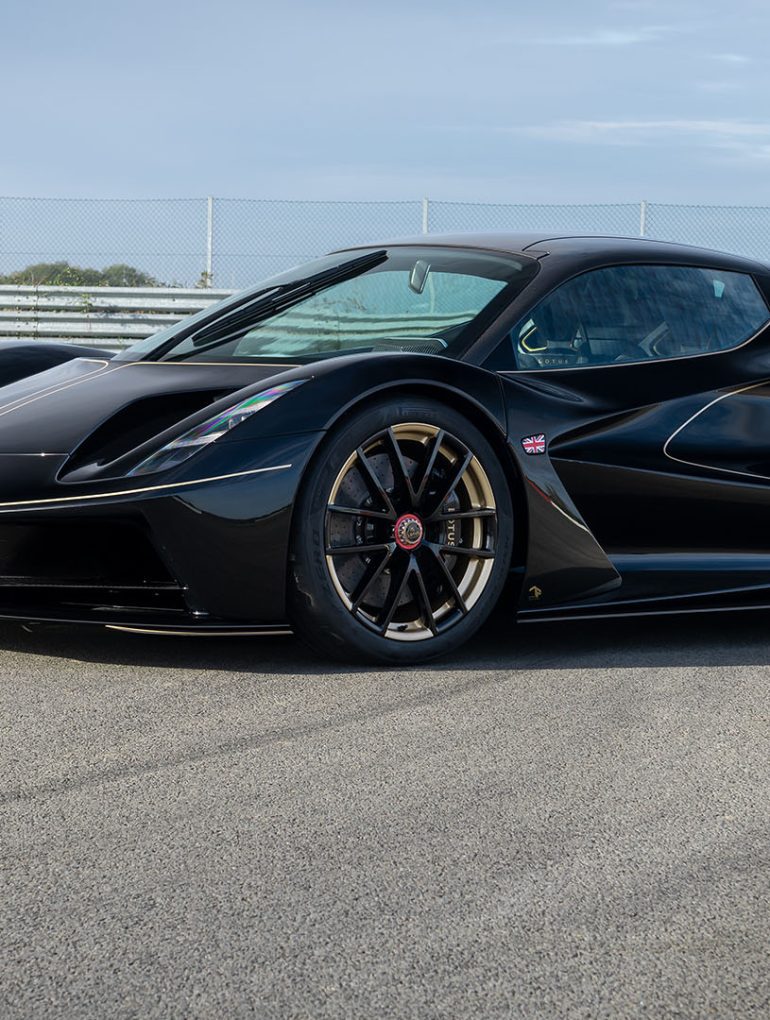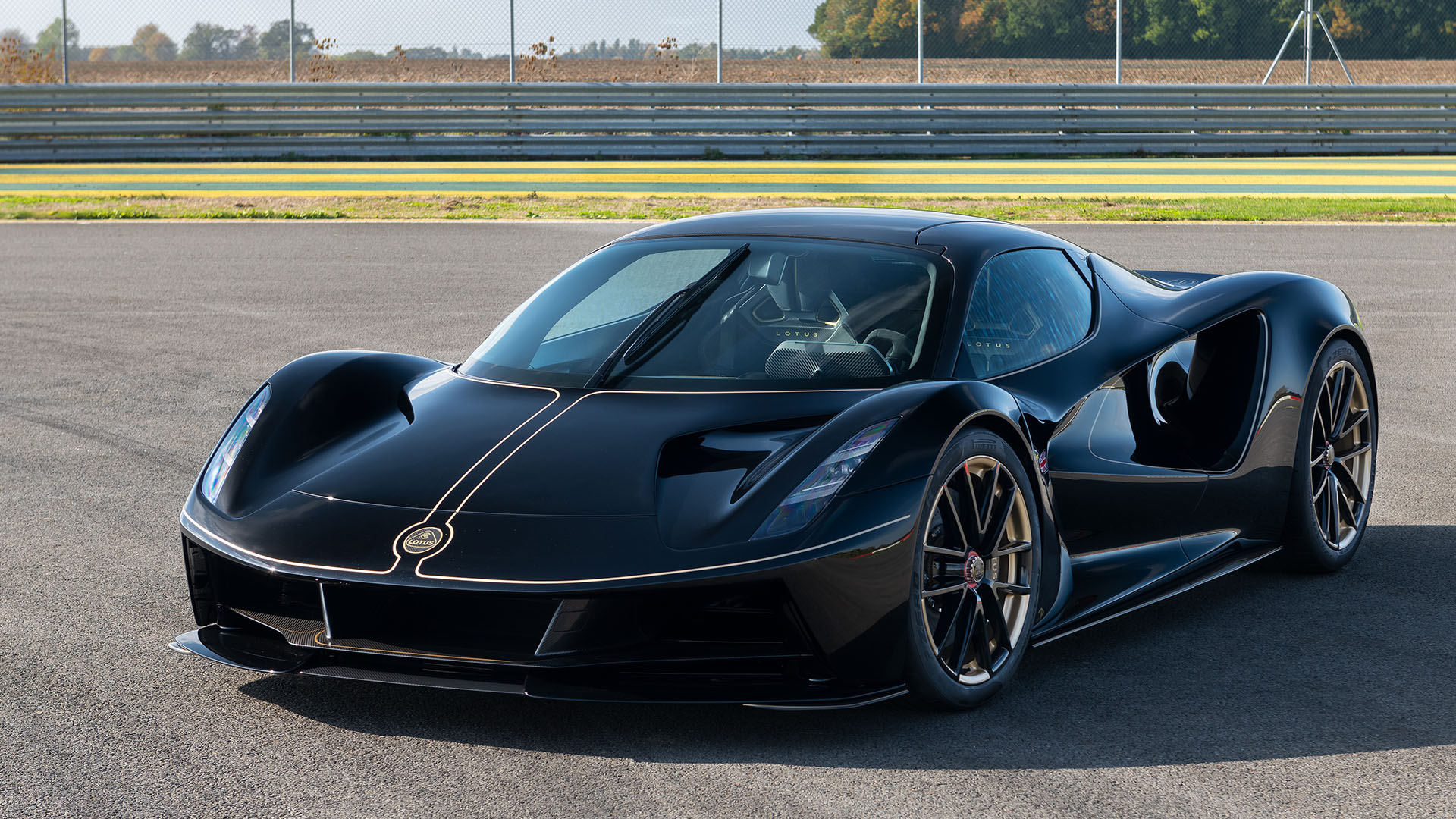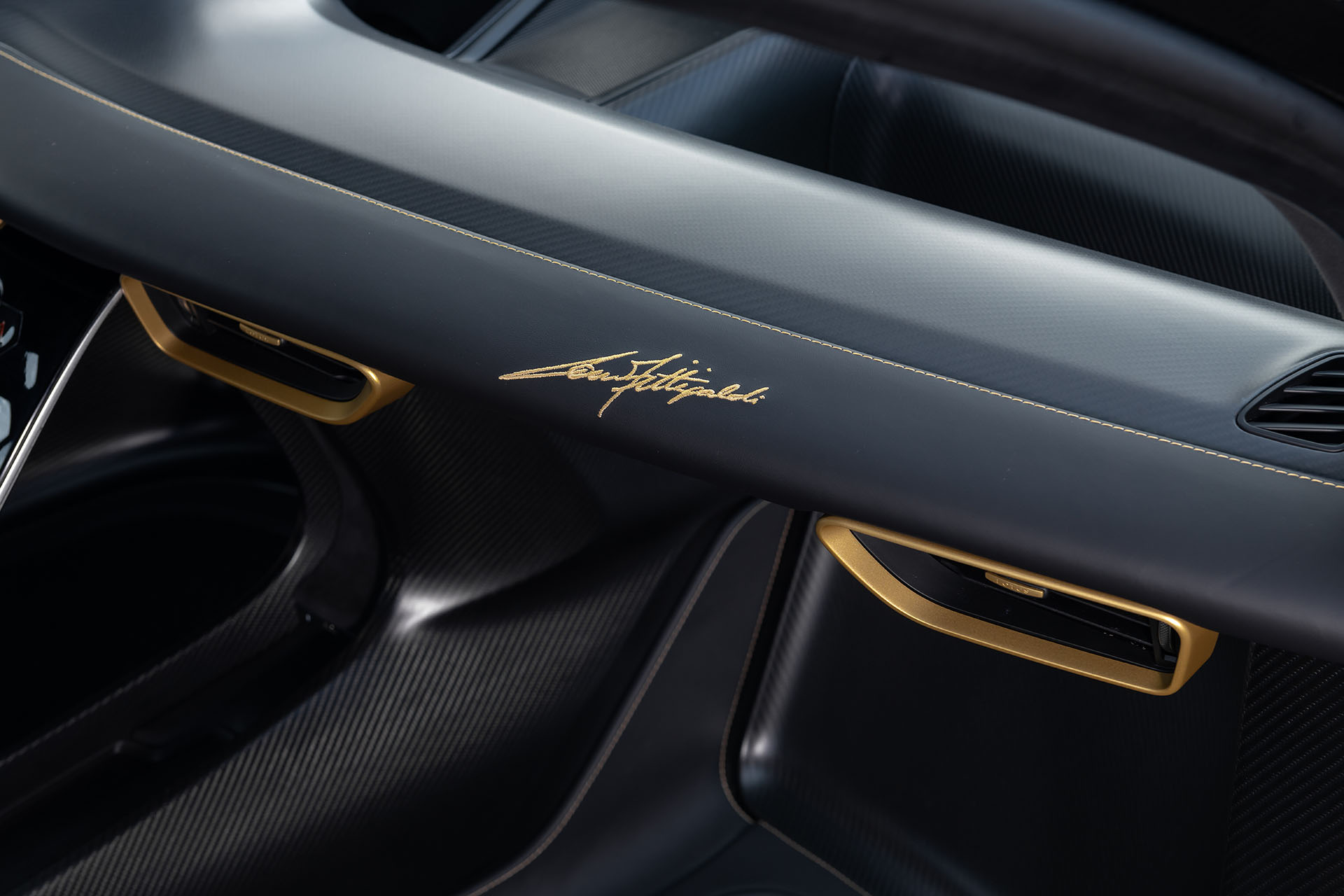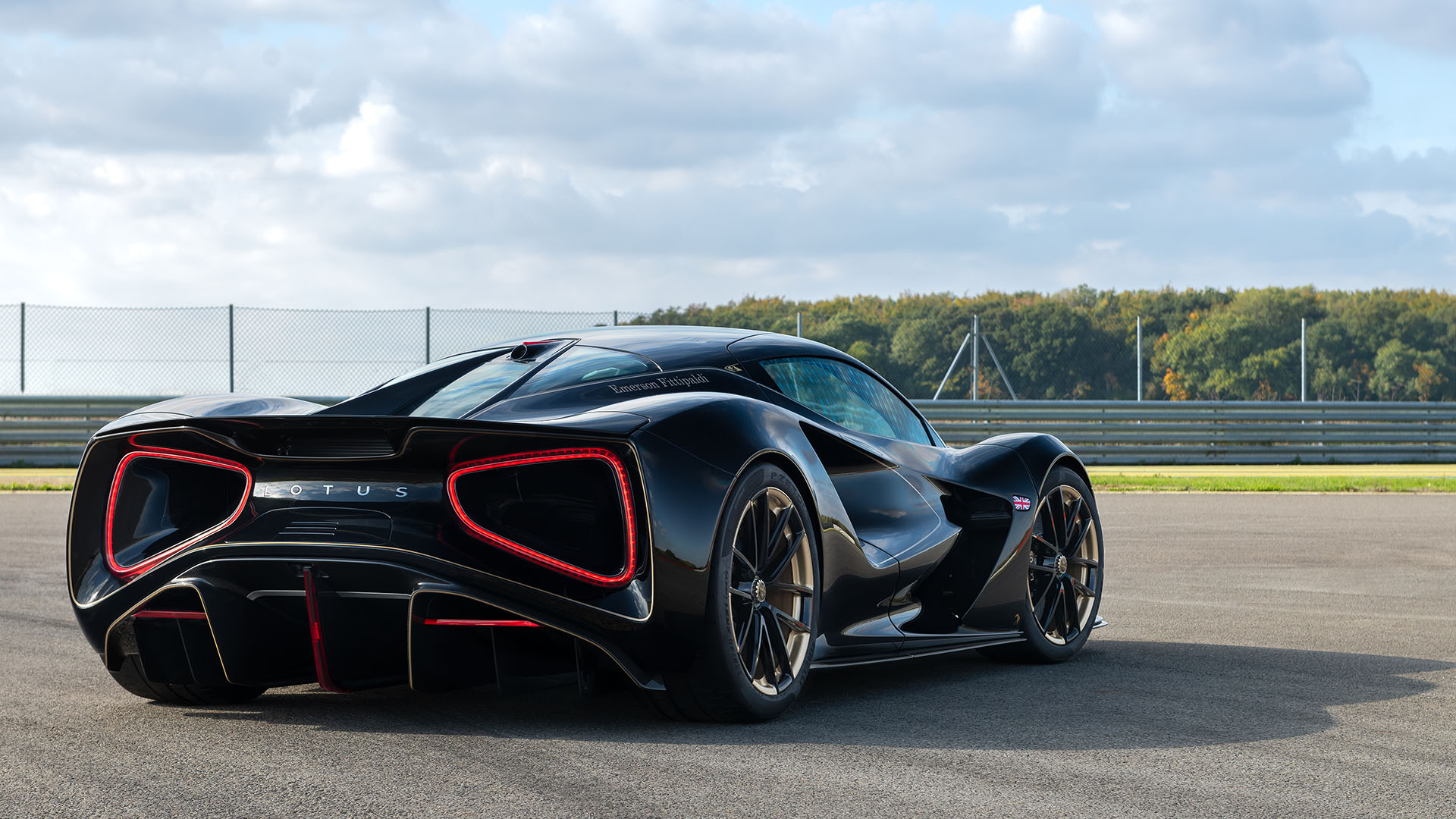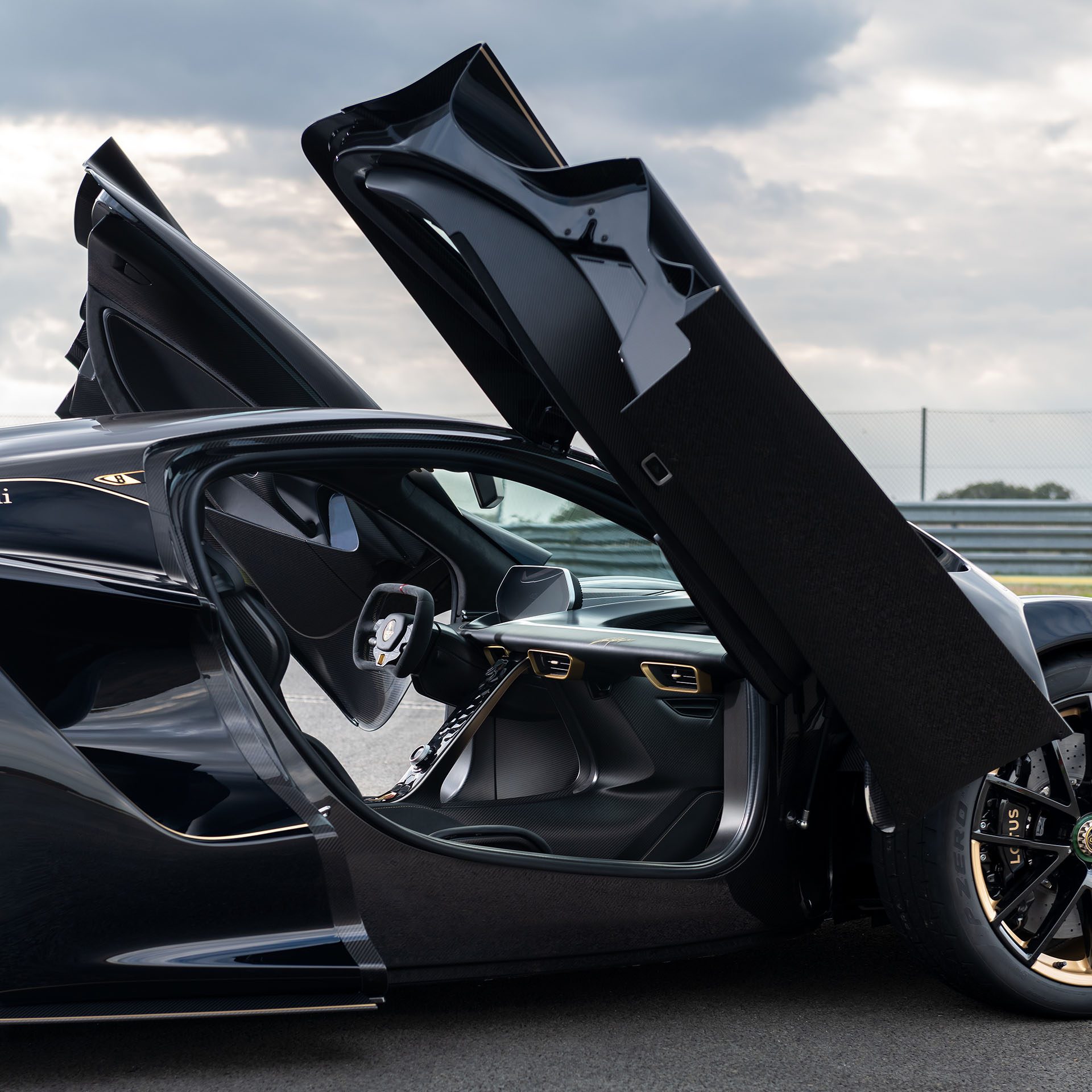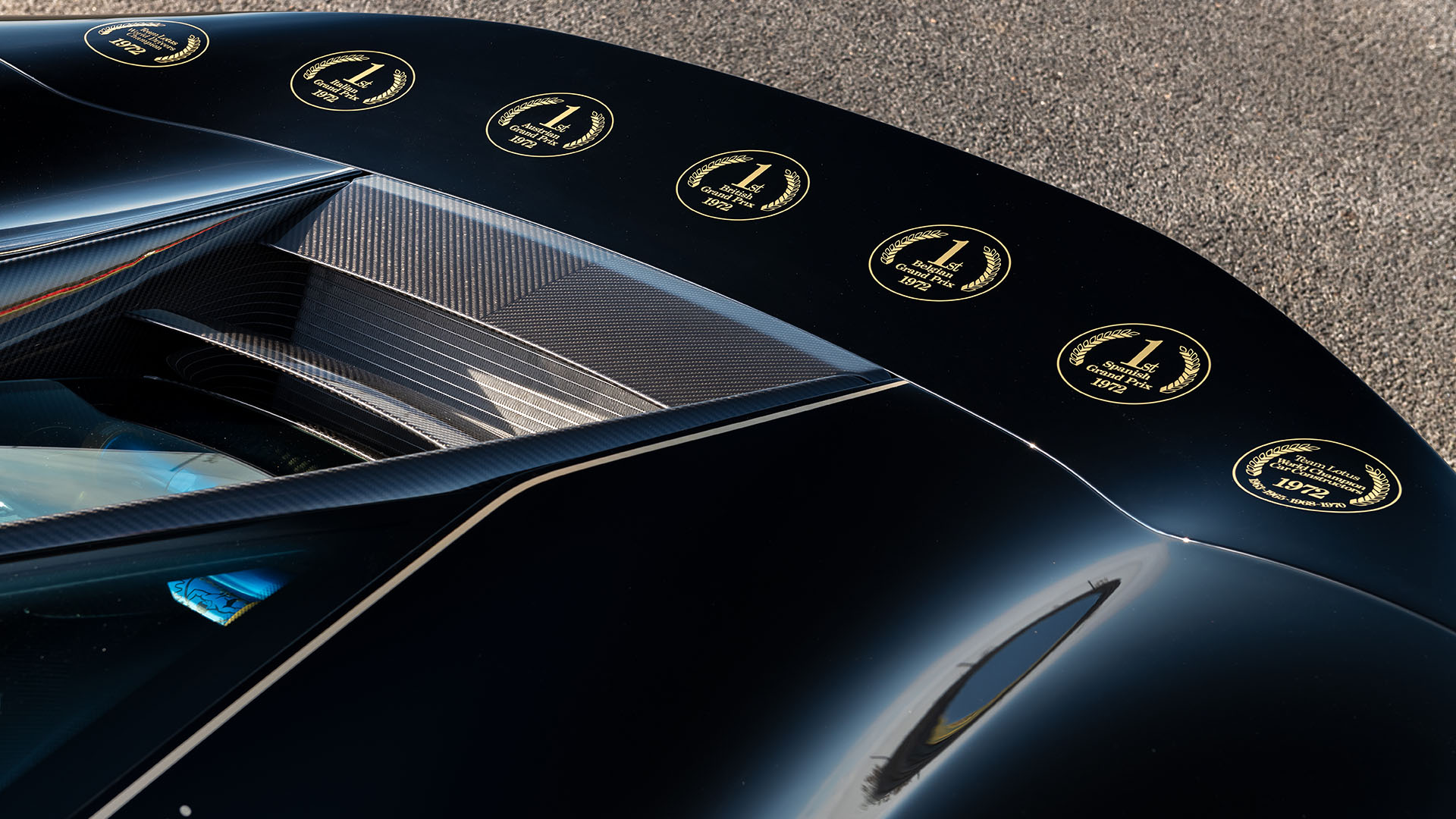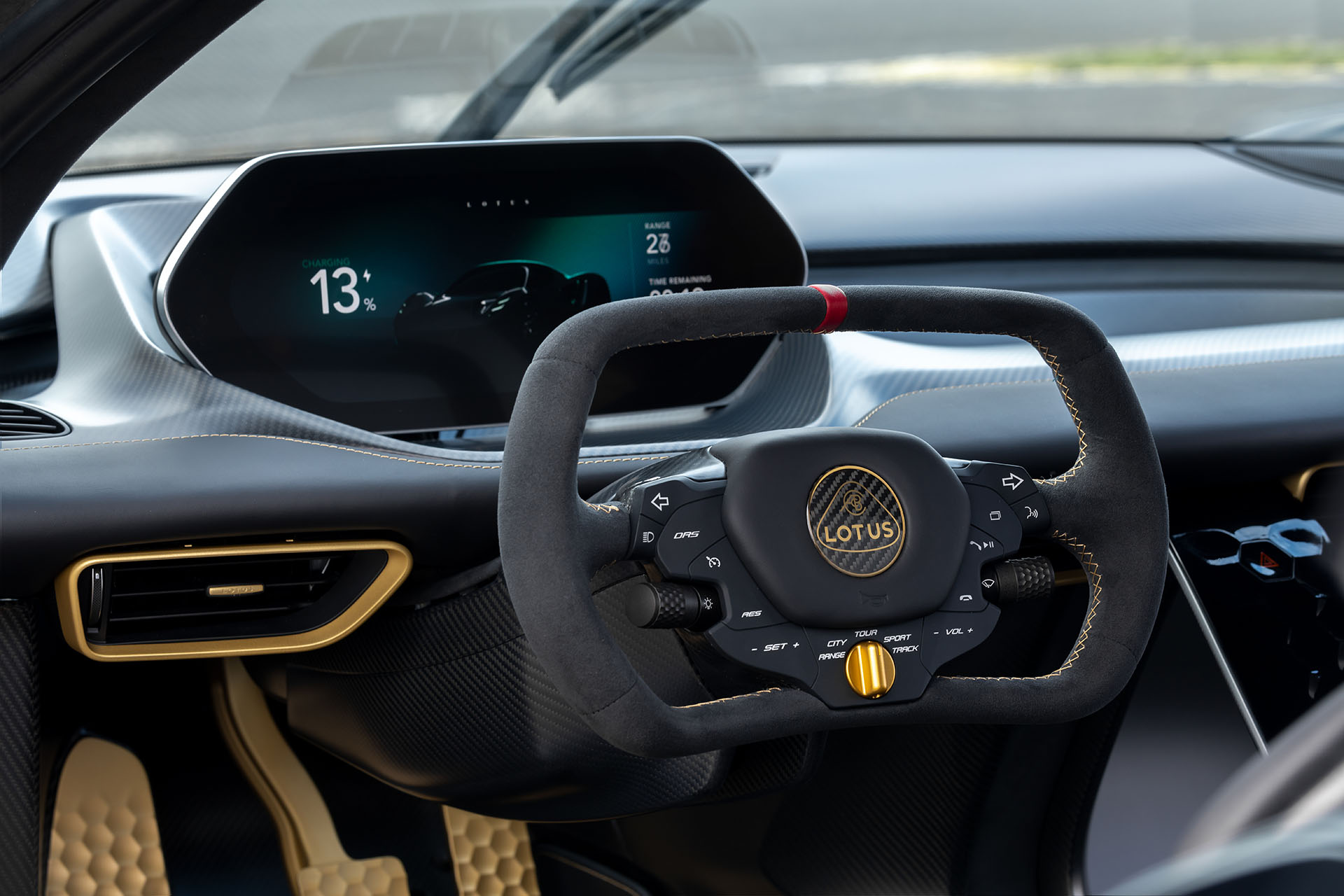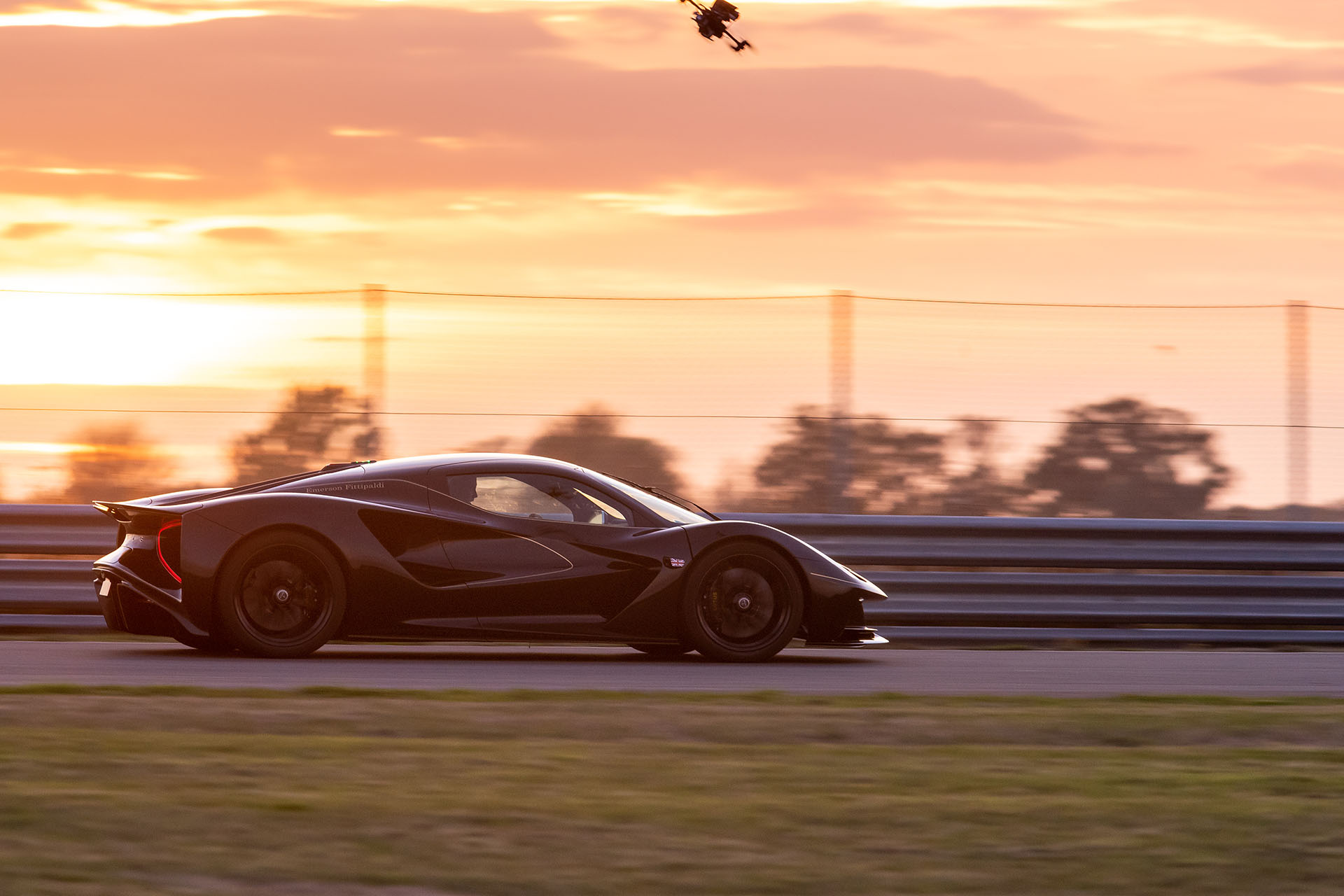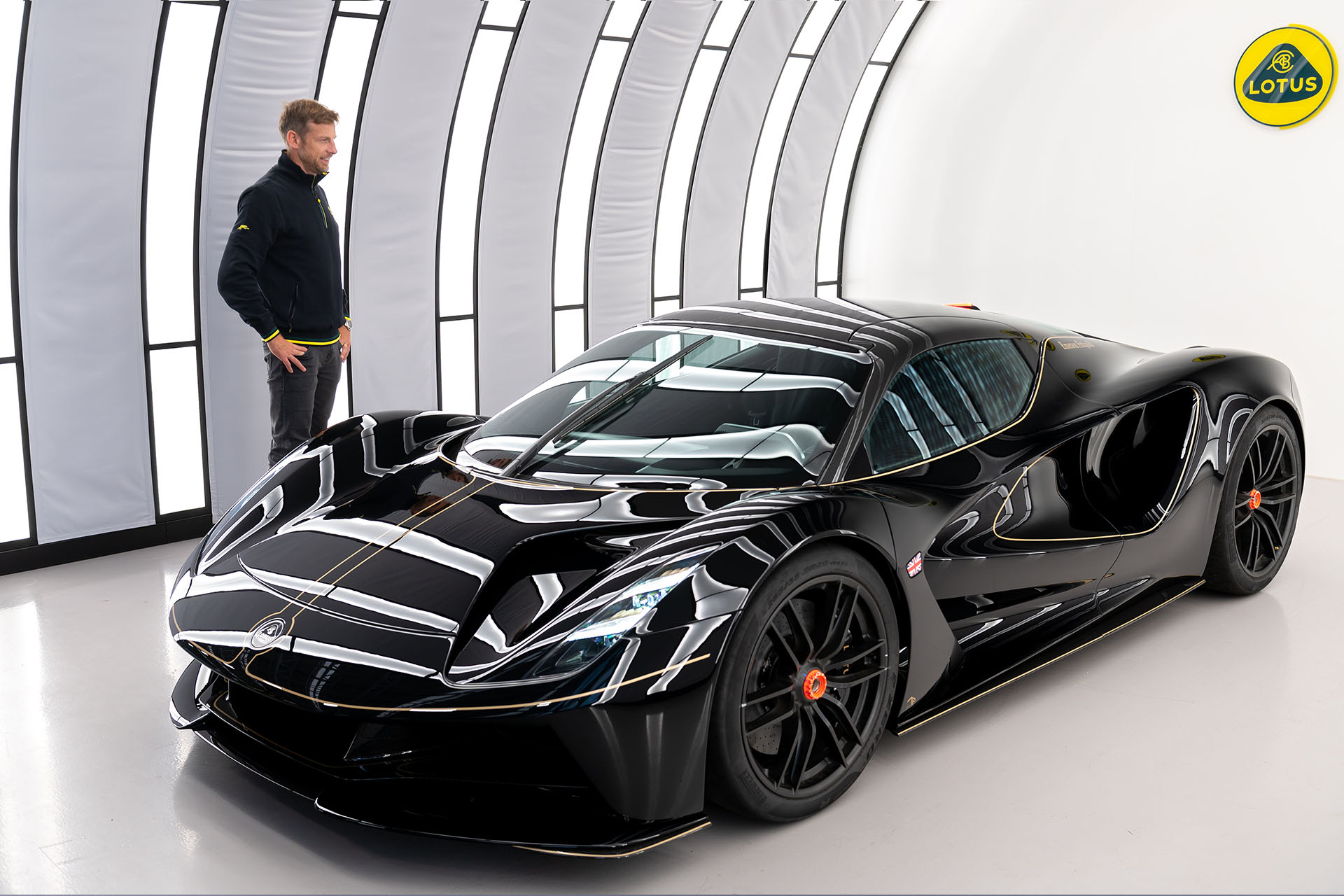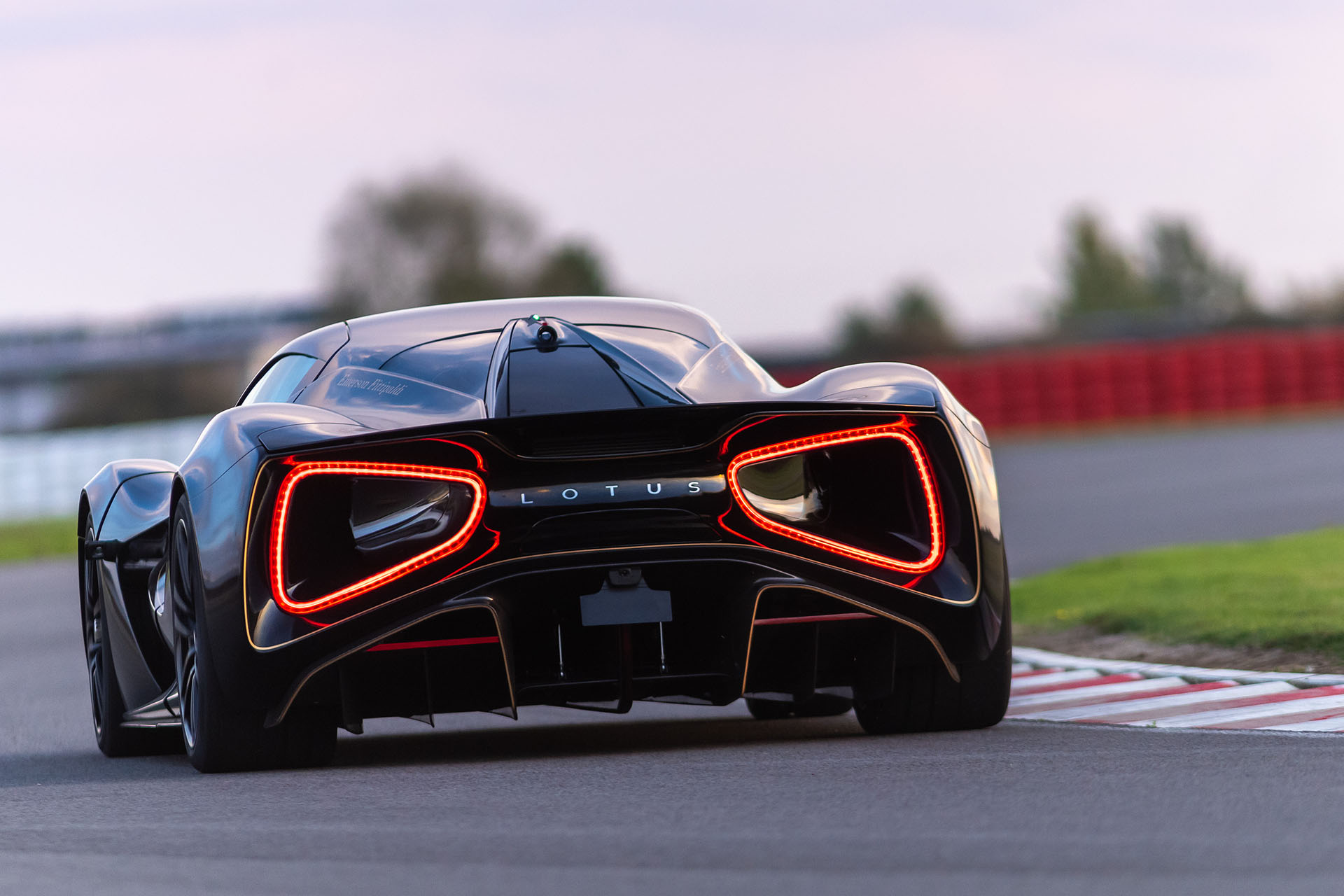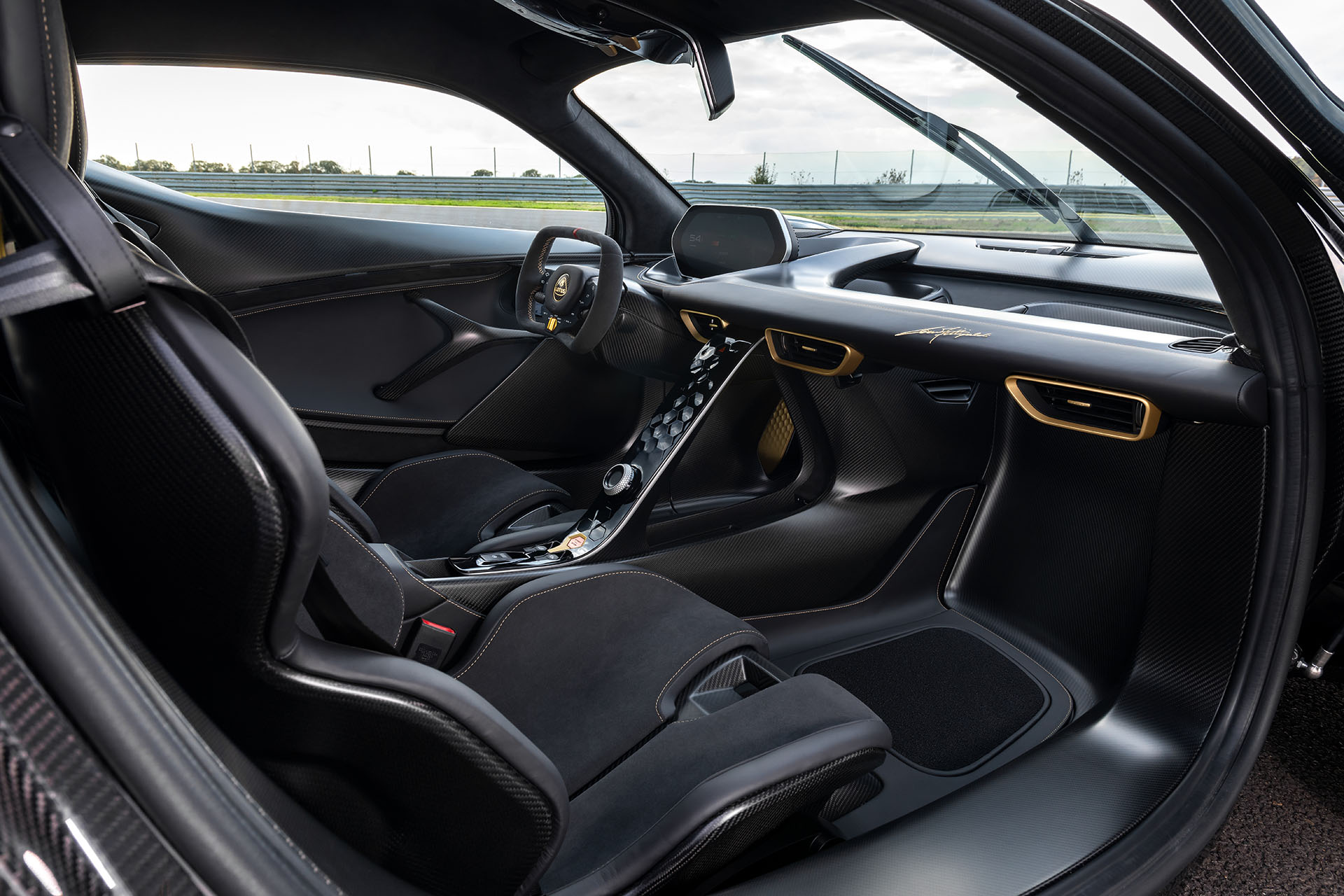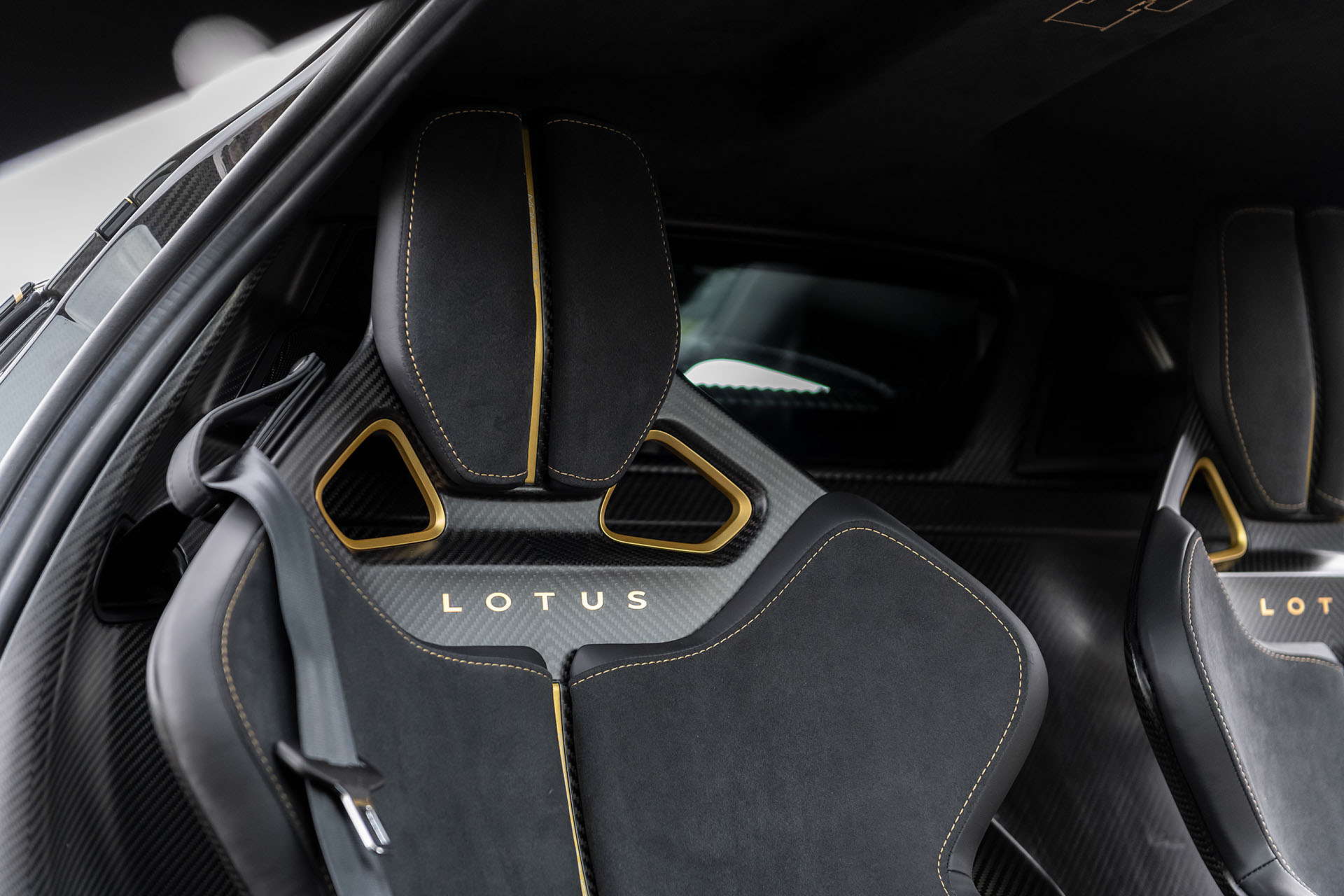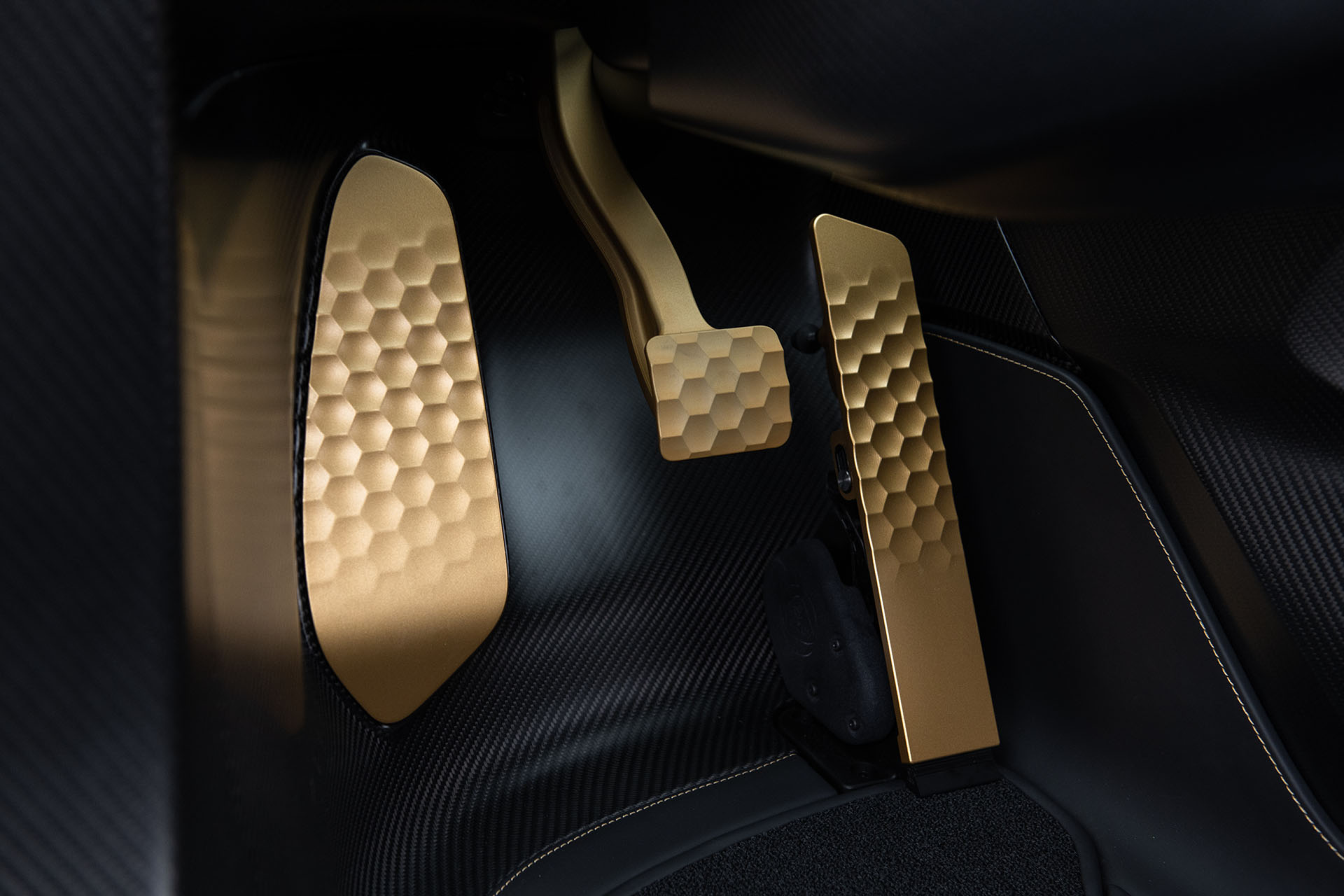I have always been a fan of a black car with gold accents, like the famous John Player Special Formula One car liveries from 50 years ago, the new limited-edition Lotus Evija Fittipaldi celebrates the race legend Emerson Fittipaldi and Team Lotus winning F1 Drivers’ and Constructors’ Championships five decades ago, naturally, this new all-electric hypercar mimics the black and gold color scheme seen on the Lotus Type 72 racecar from the early Seventies, the first eight units of this special edition are already being hand-built at Hethel in Norfolk, UK, the global HQ of Lotus sports car design and manufacturing, and are sold to clients that will receive their unit in early 2023.
Showcasing the world-famous 50-year-old black and gold color scheme, the exterior of this Evija is hand-painted exterior and shows multiple unique design features especially created to commemorate this amazing collaboration between Emerson Fittipaldi and Lotus, including a hand-tinted plan view of the Type 72 etched into the exposed carbon fiber roof, while a genuine Fittipaldi signature gets hand-stitched into the dashboard, but the most emotive detail of all is the rotary dial on the floating central instrument panel. It has been hand-crafted from recycled original Type 72 aluminium, ensuring a genuine piece of the iconic F1 racer is part of each Evija Fittipaldi.
During the official unveiling at a once-in-a-lifetime experience day at Hethel the guest of honor was Emerson Fittipaldi himself, who said: “It’s fantastic to be back at Hethel for such a special occasion. I’ve really enjoyed being a part of this project and it’s been a wonderful experience revealing the car to some of the new owners. Having the opportunity to drive both the Evija Fittipaldi and my championship-winning Type 72 Formula 1 car on the test track at Hethel has been an incredible experience.”
The fact that a total of all eight surviving examples of the Type 72 were gathered at this event for the first time in history made it obvious to have the same number of Evija cars built for the early adopter who put in their order, Simon Lane, Director, Lotus Advanced Performance, commented: “The word ‘legend’ is often overused, but this project has brought together the Lotus Evija hypercar, Emerson Fittipaldi, the Type 72 race car and our brand’s celebrated Formula 1 heritage. No argument, that is four legitimate legends, all collaborating to deliver a truly unique hypercar and a world premiere that was a real ‘pinch yourself’ moment.”
He added: “Production of the Evija has commenced at Hethel, and these eight cars are a very special celebration of this important moment in our history.”
The bespoke specification of the Lotus Evija Fittipaldi starts with its unique paint finish, which includes its designation written on the bodywork in gold lettering to the side of the rear window. Complementing it are black and gold ‘Type 72’ wheels complete with anodized center lock surrounds – red on the left side of the car and green on the right – as well as black and gold brake calipers. Decals that celebrate the Type 72’s race victories from the 1972 season are presented on the active rear wing, while a number 8 has been applied to the B-pillar. Fittipaldi raced with that number on his car during the 1972 season, including for his win at the British Grand Prix. Carbon and gold Lotus nose badge complete the exterior styling.
Naturally, a similar color scheme had to be designed for the interior, luxurious and bespoke at the same time, finished in black leather with beautiful gold contrast stitching is seen throughout the entire cockpit, while the roofline is another exclusive touch just for this limited-edition model, to really add the finishing touch the air vent surrounds, center rotary dial, start/stop button and pedals are all finished in stunning gold color.
Clive Chapman, Managing Director, commented: “Emerson Fittipaldi and my father enjoyed a very special relationship, and their spectacular success was a brilliant team effort by the dedicated designers and mechanics at Team Lotus. One of motorsport’s most admired drivers, it is always emotional whenever Emerson is reunited with the Lotus Type 72, which he describes as the greatest car he ever raced.”
He added: “Bringing together the Lotus Evija, the Lotus Type 72, the black and gold livery, and Emerson Fittipaldi, all in celebration of his World Championship victory 50 years on – need I say more?”
Despite its incredible power and performance, the driver remains at the center of the Lotus Evija experience, just as it was for the Emerson Fittipaldi and the Type 72. The technical specification and performance figures of the Lotus Evija Fittipaldi are truly astonishing; more than 2,000 PS makes it the most powerful series production car in the world, creating more than 1,700Nm of torque. The 0-62 mph (0-100 km/h) is completed in under three seconds, and 0-186 mph (0-300 km/h) takes nine seconds from a standing start. The limited maximum speed is 217 mph (350 km/h).
From one world champion to another, earlier in the week Jenson Button visited Lotus to test drive the Evija and Emerson’s Type 72 on the famous Hethel test track. It was the first time Jenson had seen the Evija in production and took one out on track to give it a shake-down before the launch of Evija Fittipaldi. Quickly getting up to speed Jenson drove the car around the 2.2-mile test track, testing the car’s ride, handling and performance. He was also seen unleashing the power in several standing starts. Full of praise when he jumped out of the driver’s seat of the world’s most powerful production car. Jenson commented: “It sounds like a jet engine! You think of an EV as quiet but it’s not. The torque is astronomical. It’s amazing, it puts a big smile on your face. It feels like a spaceship, the drivability and direction in the steering certainly lets you know you are driving a Lotus; I am amazed by the agility of it. Itt is a Lotus of the future and I can’t wait to drive my own Evija.”
A stunning piece of contemporary automotive design – the work of a team led by Lotus Design Director Russell Carr – the Evija features a dramatic Venturi tunnel through each rear quarter, giving it a truly breathtaking presence. This ‘porosity’ means optimized airflow, with air channeled not just over, under, and around the Evija but through it, maximizing downforce while minimizing drag. Its front splitter aids grip while channeling cooling air to the battery pack, E-motors, and brakes, and active aero features such as a Formula 1-style DRS (Drag Reduction System) bestow the Evija with cutting-edge performance. With driving dynamics overseen by the team of Gavan Kershaw, the world-renowned Vehicle Attributes Director for Lotus, the Evija is a car like no other.
The first Lotus road car to feature a one-piece carbon fiber monocoque chassis, the cabin – from the fully adjustable race-style seats to the multi-function steering wheel – is the very pinnacle of motorsport-inspired road car design and technology. Just as the Lotus Evija is defining a new era of pure electric performance, so the Lotus Type 72 remains the most successful racing car not just of its day, but in F1 history. In 2019 Autosport magazine named it the greatest-ever F1 car. A revelation both on the drawing board and on the track, the Type 72 was the first racing car to incorporate aerodynamics as part of its initial design. The integrated rear wing and front splitter were designed specifically to allow the car to slice through the air while also creating vital downforce.
The Type 72’s air intake was relocated above the driver’s head, ensuring undisturbed and clean air could be sucked straight into the engine, while its radiators were placed in the side pods of the car rather than the nose. This not only increased cooling efficiency but improved weight distribution – and therefore performance – in the process. The same approach was also taken for the brakes, mounting them inboard rather than on each wheel to aid cooling as the tops of the discs protruded through the bodywork. The Type 72 was the first of what became the traditional “wedge on wheels” designs that soon inspired every other competitor on the grid.


